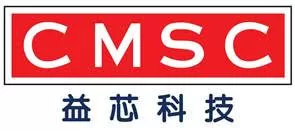Journal:
European Polymer Journal
IF: 4.598 (2021)
DOI:
10.1016/j.eurpolymj.2022.111294
Keywords:
Hydrogen sulfide, Polymeric micelles, H2S donor, SATO, ROMP
Polynorbornene‐derived block copolymer micelles via ring‐opening metathesis polymerization with capacity of hydrogen sulfide generation
Trong-Nghia Le, Huang Ru, Cheng-Kang Lee, N.Vijayakameswara Rao
Dr. Le Trong Nghia, Department of Chemical Engineering, National Taiwan University of Science and Technology, Taiwan; Institute of Atomic and Molecular Sciences, Academia Sinica, Taiwan. Email: tnle@gate.sinica.edu.tw, letrongnghia720@gmail.com
Summary of scientific publications
Since the 1990s, hydrogen sulfide (H2S) has been recognized as one of the gaseous signaling molecules (gasotransmitters) besides nitric oxide (NO) and carbon monoxide (CO). NO is the most widely studied gasotransmitter and has been shown to reduce blood pressure through vasodilation. Meanwhile, CO does not appear to be an attractive target in pharmaceutical research. As for H2S, currently there are very few studies focusing on it. H2S can react with many reactive oxygen species (ROS), for example peroxynitrite (ONOO−), superoxide radical anion (·O2−), hypochlorite (ClO−) and hydrogen peroxide (H2O2). H2S has been shown to have many biological effects, including vasodilation, antioxidant, cellular protection against oxidative stress, anti-inflammatory and anti-cancer effects.
To study the biological effects of the above mentioned gasotransmitters, donor substances need to be synthesized and can release NO, CO or H.2S under physiological conditions for a specified period of time. There are many types of molecules that can release NO, CO or H2S under certain conditions with different half-lives. S-aroylthiooxime (SATO) is an example.
However, the ability to release gasotransmitter molecules is often non-selective or rate-controlled. This can be improved by attaching substances capable of releasing H2S (H2S donor) into the polymer. These polymers will form nano-sized particles, protecting and releasing H molecules2S under certain conditions. However, H-releasing polymers2S remains largely unexplored. Very few polymers are capable of releasing H2S is studied for biological applications. Several polymers have been synthesized by the reversible addition− fragmentation chain-transfer polymerization (RAFT) reaction, such as PEG-b-poly(FBEMA) and PFHMA-g-PEG. Functional groups capable of releasing H2S is attached after the polymer is synthesized (post-polymerization). For this method, the attachment of SATO groups and polymer chains cannot be controlled precisely, leading to difficulty in controlling the H release rate.2S. This problem can be solved by the ROMP (ring-opening metathesis polymerization) method. ROMP is a simple tool capable of generating monodisperse polymers with precise molecular weights.


In this paper, we synthesize amphiphilic polymers (PNEG-b-PNSATO) consisting of norbornene-mPEG (Nor-mPEG) as a hydrophilic part and norbornene-conjugated SATO radical (Nor-SATO) as partially hydrophobic through ROMP. These amphiphilic block copolymers can self-assemble micelles with sizes of about 41-57 nm. The number of SATO units and molecular weight of the polymer can be controlled through the monomer to Grubbs catalyst ratio. Self-assembled micelle formation and H release2S under cysteine activation is illustrated in Figure 1. Fluorescence imaging was used to evaluate H release2S in cells (Figure 2). Additionally, PNEG-b-PNSATO polymeric micelles have been shown to protect against oxidative damage caused by high concentrations of H2O2 (Figure 3).







